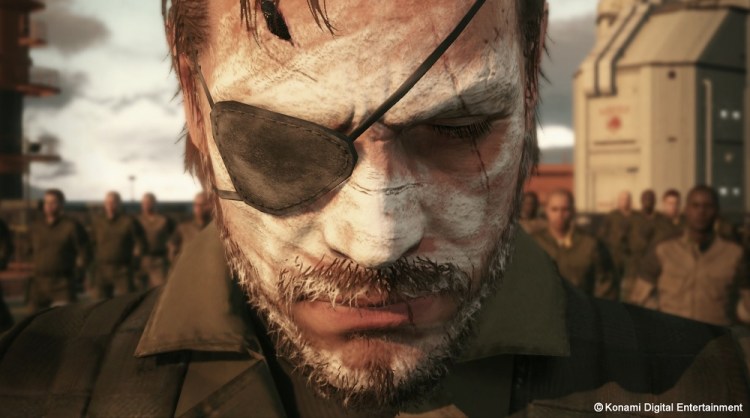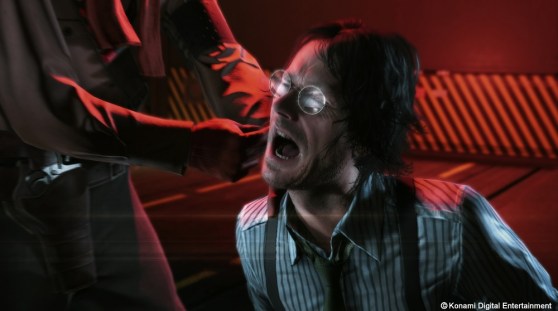Kojima: To your first question, I was actually planning to go to Afghanistan and research the area and the special forces there and so on. Everyone kept telling me it was too dangerous. I got yelled at a lot and told I shouldn’t go. In the end, I went to a few places. I’m not saying where, because that would just kill the fun of it. But I went to several places that are similar to Afghanistan.
As far as the second question, the game is set in the ‘80s. It’s way before the events of 9/11. It’s at a time when the USSR was a huge part of what was going on in the world. You remember Rambo III, where he went to Afghanistan? It’s something like the opposite of what’s happening nowadays. The positions were reversed. In a way, I want to relate to people now what was going on at the time, which was an opposite situation to what we have now.
It’s similar to what I tried to do in MGS3. People nowadays don’t know about the Cold War and the U.S.’s old rivalry with the U.S.S.R. Through my games, I’m just hoping that I can give people a message and remind them of what’s happened before. They can learn a bit about how things were different once.
GamesBeat: I’d like to know more about how you work on this balance of the open world and the story. I think of Grand Theft Auto V, which I believe had a weaker story and a weaker ending than something like The Last of Us, which was very powerful. It seems like it can be done, but I haven’t seen it done very well yet. I’d like to know more about how you can have a very strong, powerful, emotional story in an open world game.
Kojima: First off, the term “open world” might not be quite right. It’s a sandbox, but it’s not a sandbox where you can do whatever you want whenever you want and go wherever you want to go. That’s not the concept here.
There’s a big map. You can go wherever you want to go within this map. The time of day and the weather changes. But the missions are very clear. You have to go somewhere, rescue someone, kill someone, get something back. How you achieve that mission, what time of day you do it, what method you choose, that’s where the freedom lies. Also, it’s a war zone. There are no pedestrians. It’s mostly just animals and armed soldiers.
In most games — and I think this is what linear games like The Last of Us do – let’s say you have to rescue someone who’s at this point. In that linear game, you go from point A to point B. You discover story elements, get information, whatever, and then you end where you’re going. In our game, the player can just skip all of this, whatever might be in place. They could accidentally stumble right over here and then call the helicopter and clear the mission.
The focus here is more on, when you clear the mission, something happens. You learn something about the story. There are different elements that the player can discover. They don’t necessarily have to play through all the missions, through everything. But in the same way that a TV series works, when you get through a chapter, you learn certain things. You don’t learn everything, but you learn certain things about the story.
I’m not trying to relate all of this through the cutscenes. There are lots of codecs, a lot of tapes, a lot of text. The player can choose how to find them. They don’t need to all come in order. They don’t need to all appear together. But the player will start picking up these elements and putting the story together, understanding what’s happening. Fitting all this into the timeline, the story will start making sense and develop from there.
Question: There was a really strong reaction to the way Paz’s torture was characterized in Ground Zeroes. Did that surprise you? Do you expect to see a similar reaction to events that transpire in Phantom Pain?
Kojima: Of course, I expected people to react to this. But then again, the theme of the game I’m trying to create here—these are very dark themes, themes like race and revenge. These are things I don’t want to look away from. I did see it coming, that people would react to this. But that doesn’t change the message I want to relate. There are things that I think we can’t look away from. What I’m trying to do is different from just shooting a zombie in the brain. We’re trying to depict something with a very specific message, things that have happened throughout history. Because I have very that very specific message I want to relate, there are things I can’t look away from, that I have to depict.
For example, in Ground Zeroes, I wanted the player to understand what happened to Snake, to be able to empathize and understand and share his feelings. Why does Snake have these feelings of revenge? Why does he feel he needs to go after someone? In order to communicate that to the player, we had these elements inside the story. Regarding the torture, the torture isn’t a cutscene. I put it in such a way that people who want to dig deeper into the story will collect the tapes and understand that this happened, but not everyone has to see it. We specifically did that for people who wanted to learn more and understand a deeper aspect of the story.
As far as Phantom Pain goes, the story is built a little bit differently. If your question is, “Will there be torture tapes?” there won’t be as many. There are barely any tapes with that kind of content.
VentureBeat's mission is to be a digital town square for technical decision-makers to gain knowledge about transformative enterprise technology and transact. Learn More



